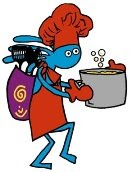The Southwest United States, in particular the Sonoran Desert, is a natural home to the Prickly Pear Cactus. In fact, did you know that the Prickly Pear was named the official state plant of Texas in 1995? Both the fruits and pads of the Prickly Pear are edible.
The cactus will blossom and set fruits which will line the edges of the pads from early spring to summer. The beautiful flowers – which are either yellow, orange or red – are pollinated by bees. These fruit are about the size of a small pear; they are referred to as tuna in Mexico and prickly pear in the United States. The prickly pear will ripen through late fall - it should only be harvested when ripe. If you would prefer not to pick the fruit yourself, they can be found in a grocery store. The fruit is a favorite in the southwest for making jams, jellies, syrups and the famous “cactus candy”!
The pads (called nopales) of the Prickly Pear Cactus are also edible, and treated like a vegetable. They can be eaten grilled or boiled. The nopales are frequently added to eggs, or used as a vegetable in soups and chilies. The nopales should be harvested early in the spring while they are very tender and do not have spines (or stickers). Again, if you do not feel like picking the pads yourself, they can be found in a grocery store. You can get the whole pads or chopped up ones (called nopolitos) which are available canned. (The pads will keep up to one week if refrigerated and wrapped in plastic,)
WARNING: Both the pads and fruits are covered with spines and, at the base of each spine, are clusters of hairlike spines that are so small they are barely visible (called glochids). Although they appear harmless, these glochids can be extremely irritating to the skin yet they are difficult to remove. Make sure you remove all spines and glochids from your Prickly Pear! Both can be removed by peeling its skin, using a knife to cut them off or by burning them off.
The Prickly Pear is also somewhat of a medical marvel. Illnesses that the pads are used to treat might surprise you – they include:
• The Prickly Pear is grown in Mexico to make medicine to treat
diabetes.
• The pads are steamed, peeled and then chilled to treat
arthritis.
• The juice of the pads is used to treat
urinary tract infections.
The pads have also been used to aid a variety of injuries, including:
• the treatment of
cuts, if used as a poultice
• the treatment of
infections and mouth sores
• the decrease of
hair loss, if used as a rinse
Below are a couple of recipes for Prickly Pear!! The first is from Plants of the Sonoran Desert and their Many Uses by Don Wells and Jean Groen. Permission to print the recipe granted by Wells/Groen Publishing Co., Apache Junction, AZ.
NOPALITO SALAD
1 (28oz) jar NOPALITOS, rinsed, drained & chopped
1 15oz can BLACK BEANS, rinsed & drained
½ cup minced GREEN PEPPER
½ cup minced ONION
½ cup SALAD OIL
½ cup CIDER VINEGAR
¾ cup GRANULATED SUGAR
1 tsp. SALT
½ tsp. PEPPER
Place drained nopalitos and black beans in glass bowl. Add minced green pepper and onion. Mix oil, vinegar, sugar, salt and pepper in pan. Heat until sugar and salt are dissolved. Pour over vegetables and stir well. Cover and refrigerate for 12 to 24 hours. Enjoy.
GRILLED CHICKEN AND PRICKLY PEAR SALSAThe following recipe is from Cowboy Cook Book by Bruce and Bobbi Fischer. Permission to print the recipe granted by Golden West Publishers, 4113 N. Longview, Phoenix, AZ 85014.
- Prickly Pear Salsa
- ½ large CANTALOUPE
- ½ large HONEYDEW MELON
- 1 large PINEAPPLE
- 1 RED PEPPER, finely diced
- 1 RED ONION, finely diced
- 1 bunch GREEN ONIONS, finely diced
- 1 bunch CILANTRO, finely chopped
- JUICE of 1 LEMON
- 1 Tbsp. CUMIN
- 1 cup PRICKLY PEAR SYRUP
- 4 CHICKEN BREASTS
To make salsa, cut cantaloupe, honeydew and pineapple into 1/4-inch pieces. Place fruit and vegetables in a bowl. Squeeze lemon juice over the mixture; add cumin. Pour prickly pear syrup over all and stir. Grill chicken breasts. When done, pile salsa on chicken and serve immediately.
